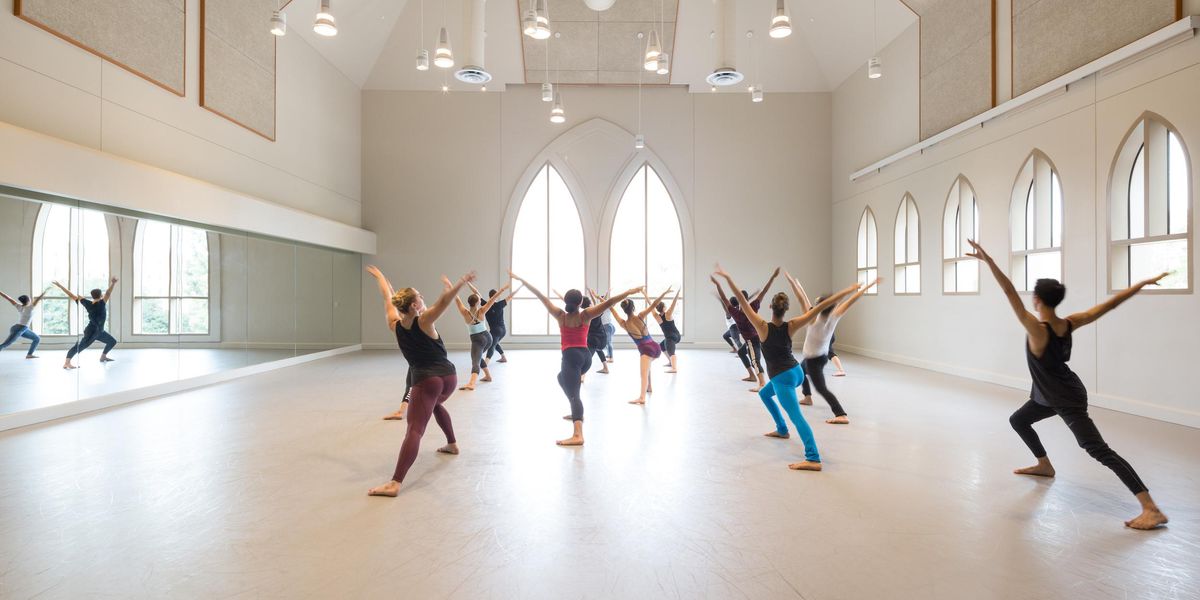Story Ballets vs. Abstract Ballets—and a Strange Animal in Between
While we ponder the pitfalls and challenges of new story ballets, some “abstract” ballets are proving more durable (consistently popular) than we might expect. And then, to throw a wrench into the neat polarity of narrative vs. abstract, there’s Big Dance Theater’s Ich, Kürbisgeist, which is story-like without a cogent story.
Christopher Wheeldon’s Cinderella, tells a story with clarity and a rich imagination. It’s dazzling in its integration of libretto, design, music, and choreography and heartfelt in its dancing. When San Francisco Ballet brought it to NYC, audiences left the theater sighing with satisfaction. Not every new story ballet fares that well, but the conventional wisdom is that audiences want story ballets.
Last week, American Ballet Theatre dusted off a Tharp and a Morris, both of them still stellar in their “abstract” choreography. Each projected a strong mood in tune with the music.
Tharp’s Bach Partita (1983) took us through a constantly shifting geometry. While we saw plenty of pointework and extensions, the steps, especially in the partnering of the three main couples, were complex and surprising. Gillian Murphy embodied the boldness of Charles Yang’s amplified violin, and Marcelo Gomes, partnering her, captured Twyla’s humor in some of the manic arm moves. As the stage filled up with additional dancers in swirling skirts, the steps got quirkier. The sense of discipline reigning in wildness was underscored by the narrow color palette—all the costumes were beige.
Mark Morris’ gorgeous Gong (2001) was softer, more colorful, more nuanced. The gamelan-like score by Colin McPhee found its Asian echoes in the sink-into-one-hip shapes. Isaac Mizrahi dressed each of the 15 dancers in a different vibrant color. Two silent in-between sections were rhythmically breathtaking: the first danced by Murphy and Sascha Radetsky, the second by Misty Copeland and Marcelo Gomes. I was beyond happy.
And I wasn’t the only one. Audiences responded to both the Tharp and the Morris as warmly as to Cinderella. These “abstract” pieces were so legible in their progression that no one had to ask, What is this about?
Big Dance Theater’s
Ich, Kürbisgeist
Photo by Julienne Schaer, Courtesy NYLA
Big Dance Theater’s Ich, Kürbisgeist, currently part of the Replay series at New York Live Arts, is another story altogether. Or rather not a story. In a kooky, dramatic setting overflowing with thrift-store type objects and vestments, five loony characters deliver their lines with such focused intention that it feels like a story. You really want to know what happens next. But Sibyl Kempson’s script is spoken only partly in English—you hear thick Irish or German or Swedish accents or an altogether made-up language. Though there is no decipherable overall plot, you pick up mini-narratives about one character’s relation to another. You understand something about a pumpkin harvest, a storm, a young woman who is maybe forced to marry a priest. A bear who is scary at first returns later as a protector.
Annie-B Parson’s spare, ritualistic dances in this setting seem just right: They are ceremonies marking a great moment, a respite from the madcap shenanigans. They give the whole piece a kind of timelessness. Since the beginning of time, people have been riveted by storytellers. And sometimes its the telling rather than the tale that one remembers.
Some ballet companies favor story ballets because they believe that’s the most sure-fire way of attracting audiences. But there are many ways for a dance work (or dance theater work) to pull the audience along. A story is one way. A sequence of exciting, followable movement is another way. An intriguing environment with colorful characters is yet another way. And there are more. I am happy to say that both SFB’s season and ABT’s season, have an array of all these types of approaches.




